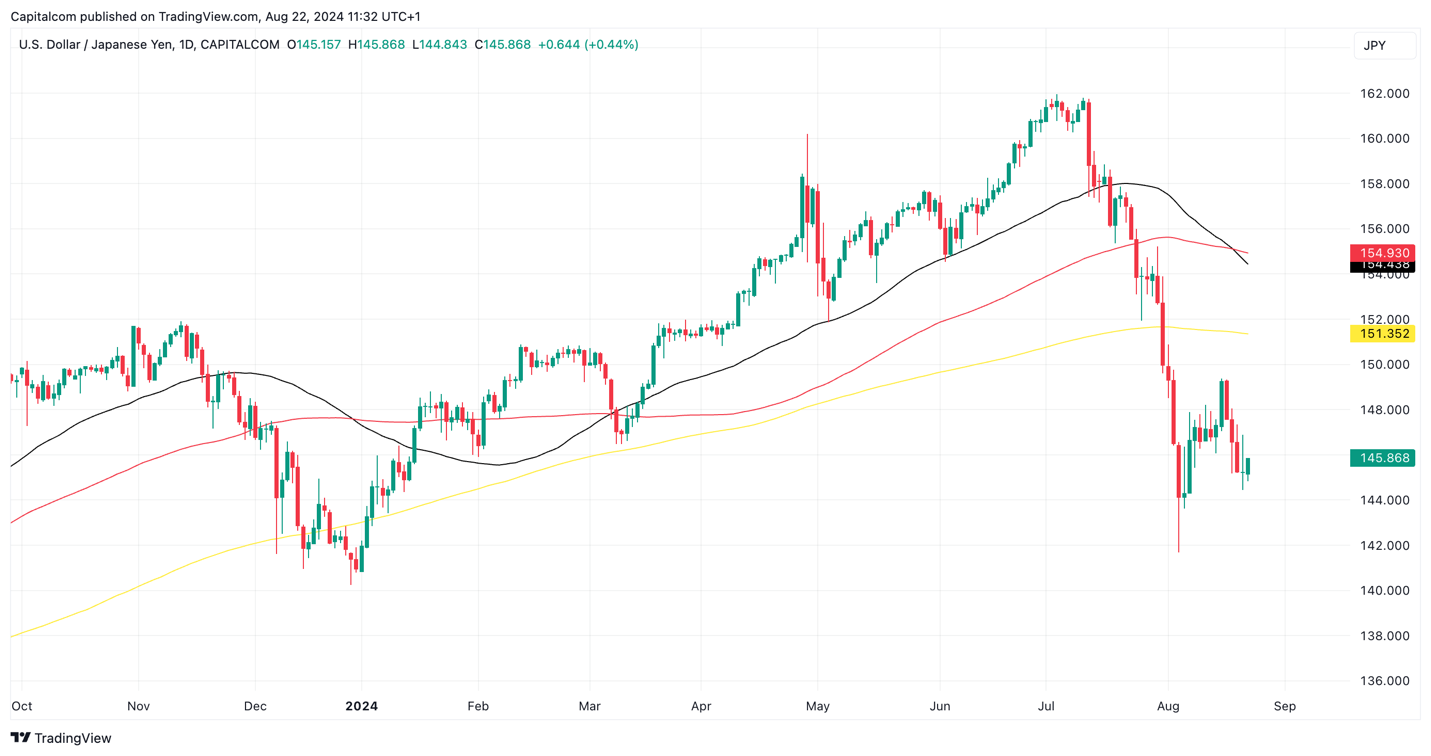USD/JPY Latest: dovish Fed and hopes for September rate cut
USD/JPY attempts to recover some bullish drive ahead of Powell’s speech at the Jackson Hole Symposium
The US dollar has been unable to regain the upper hand against the Japanese yen since the US data started to show signs of weakness back in early July. USD/JPY remains over 10% lower from the highs on July 11 despite having bounced off the August 5 lows.
In the grand scheme of things, the pullback has been marginal given the pair remains 40% higher than the level at the start of 2021, when most central banks started hiking rates. Nonetheless, the recent pullback seems to be sustainable as the dollar-dominance that has taken place over the past three years seems to have come to an end.
Wednesday’s FOMC meeting minutes seemed to all but confirm a rate cut in September, following a close call to keep rates unchanged in July. “Several observed that the recent progress on inflation and increases in the unemployment rate had provided a plausible case for reducing the target range by 25 basis points at this meeting.” This gave a dovish feel to the minutes causing the dollar to retrace further and yields to drop. The question remains as to how much the Fed will cut in September, with markets leaning towards a 25-bps cut so far. 50 just feels like too much of a confession that they got it wrong in July, and that could cause more panic in markets.
On the Japanese front, the yen remains dominant across the board as the economic data shows a strengthening economy. The second quarter GDP data showed a 0.8% growth in the economy, higher than forecasted and a significant rise from the -0.6% seen in Q1. On a yearly basis, the figure also surprised investors by showing a 3.1% growth since Q2 2023, versus 2.1% expected. The July CPI data will be released on Friday, with forecasts expecting to see a continued rise in prices, evidencing the fact that it is not only external factors that a driving prices higher, as once speculated by the BoJ, but also strong domestic demand.
This realisation allowed the Japanese central bank to raise rates twice in the past few months, also in an attempt to stop the continuous depreciation in the yen. But markets remain convinced that there will be no more rate hikes for a while, at least until the start of 2025 based on market pricing. Regardless, if this dynamic of expected lower rates from the Fed and expected higher rates from the BoJ continues, the USD/JPY is likely to continue facing downside pressure as the carry trade continues to unwind. Stronger economic data from Japan could push the currency lower over the coming weeks, as could weaker data in the US.
For now, USD/JPY is attempting to recover some upside ahead of Jerome Powell’s speech at the Jackson Hole symposium on Friday. The bears have lost a little steam ahead of the event so we may see an attempted bullish reversal if markets perceive that the central bank continues to have confidence in the performance of the US economy. 148 will be a key level to overcome ahead of the august 15 high at 149.40. To the downside, a drop below 144.46 could re-confirm the appetite to drive the pair lower.
USD/JPY daily chart

Past performance is not a reliable indicator of future results.